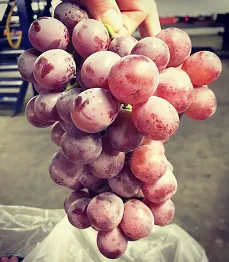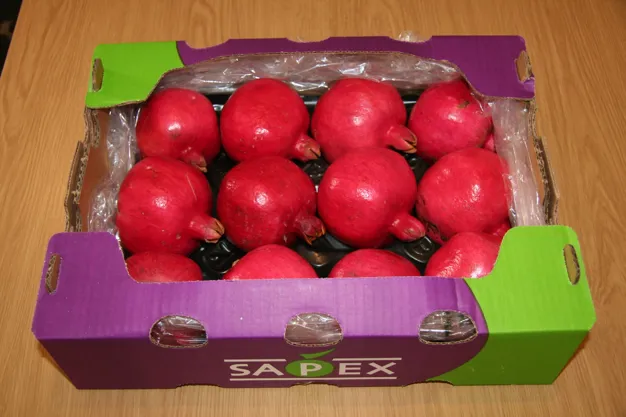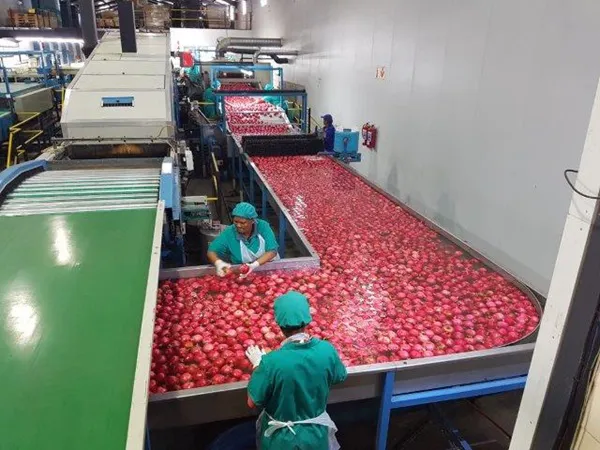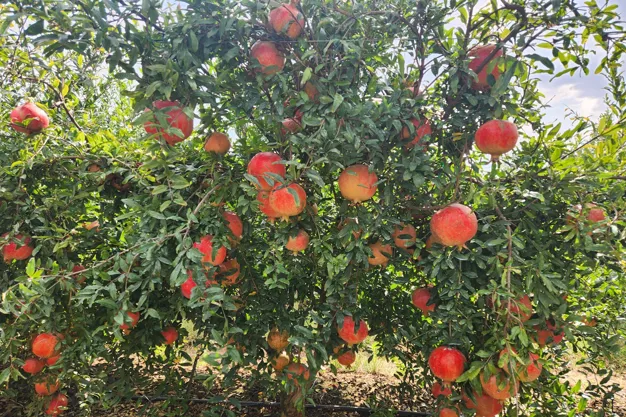 The tail-end of South Africa's red seedless grapes will be loaded for Europe this weekend, where the red seedless market has been excellent, says Kobus Louw, general manager of Sapex. "The last of the Crimson, the Scarlotta and Allison are doing really well overseas." Red seedless volumes trailed off quickly after the last storm in the Hex River Valley which significantly reduced their exports.
The tail-end of South Africa's red seedless grapes will be loaded for Europe this weekend, where the red seedless market has been excellent, says Kobus Louw, general manager of Sapex. "The last of the Crimson, the Scarlotta and Allison are doing really well overseas." Red seedless volumes trailed off quickly after the last storm in the Hex River Valley which significantly reduced their exports.
South African white seedless mostly sidestep price drop after India's arrival
"In general, the table grape season was marked by unprecedented prices, when speaking about averages, some of the highest prices we've ever had," he remarks.
"However, by March the white seedless market started really struggling with the simultaneous arrival of grapes from India which came all the way around the Cape to avoid the Red Sea. It was much bigger than anticipated and after the long voyage the quality was not the best. Fortunately, by then our white seedless was mostly done, we mostly had prestige cultivars like Autumncrisp® still in the market. They lost some of their value – I'd say between 5 and 10% - but for Indian grapes it was really bad: prices on their white seedless dropped by half when they arrived. Where our grapes still obtained 12 to 13 euros for a punnet carton, it dropped down to 6 or 7 euros when all of their grapes arrived. I don't know how Indian grape exporters could make any money this season, and add to this the extra freight costs. I really feel for them."
When the domestic table grape and stone fruit seasons end, Sapex start importing it from May until October. "Everybody is a bit worried about the shipping from Egypt to South Africa, as the troubles in the Red Sea might disrupt the shipping through the Mediterranean as well. We hope that the quality can stand up to longer transit times."

Lower pomegranate crops from South Africa and Peru
Pomegranates is a Sapex speciality, but when South African volumes are down by 30% and Peru's by around 40%, there's no way to fully satisfy demand (even if clients are loath to see it that way).
"We couldn't service all of our programmes because of a combination of climatic factors like late frost and very high temperatures during flowering and fruit development. There was some sunburn which we see every year."
The pomegranate season ended two to three weeks early and the last fruit will be loaded this weekend. A lot of fruit are still on the water, destined for the Middle East, the UK, Western Europe, Scandinavia and Russia over the coming four to six weeks.

Vessels omitting Cape Town affect Middle East trade
Sapex's pomegranate producers in the north of the country (Limpopo Province) start their pomegranate season a month before the Cape crop is ready for harvest, and these early volumes make up a quarter of their volumes currently. Pomegranate volumes from the north are set to significantly rise by next year as trees mature; among their advantages is that it can go straight to Durban for the Middle East, which is a very strong market for South African pomegranates.
"The last two vessels on which we'd intended to load pomegranates for the Middle East both bypassed Cape Town. We did briefly consider trucking fruit from the Western Cape to Port Elizabeth (which we've done before) or to Durban but it just doesn't make financial sense: it costs more than R60,000 [2,900 euros] from the Cape to Durban per container."
He observes that while it certainly isn't ideal that this fruit will now wait fourteen to twenty days for its next lift, at least pomegranates are able to withstand it to a greater degree than table grapes, for instance, can.
Most South African export pomegranates are still grown in the Western Cape, but already a quarter (and growing) of Sapex fruit comes from Limpopo Province For more information:
For more information:
Kobus Louw
Sapex
Tel: +27 21 883 8280
Email: sapex@sapex.co.za
